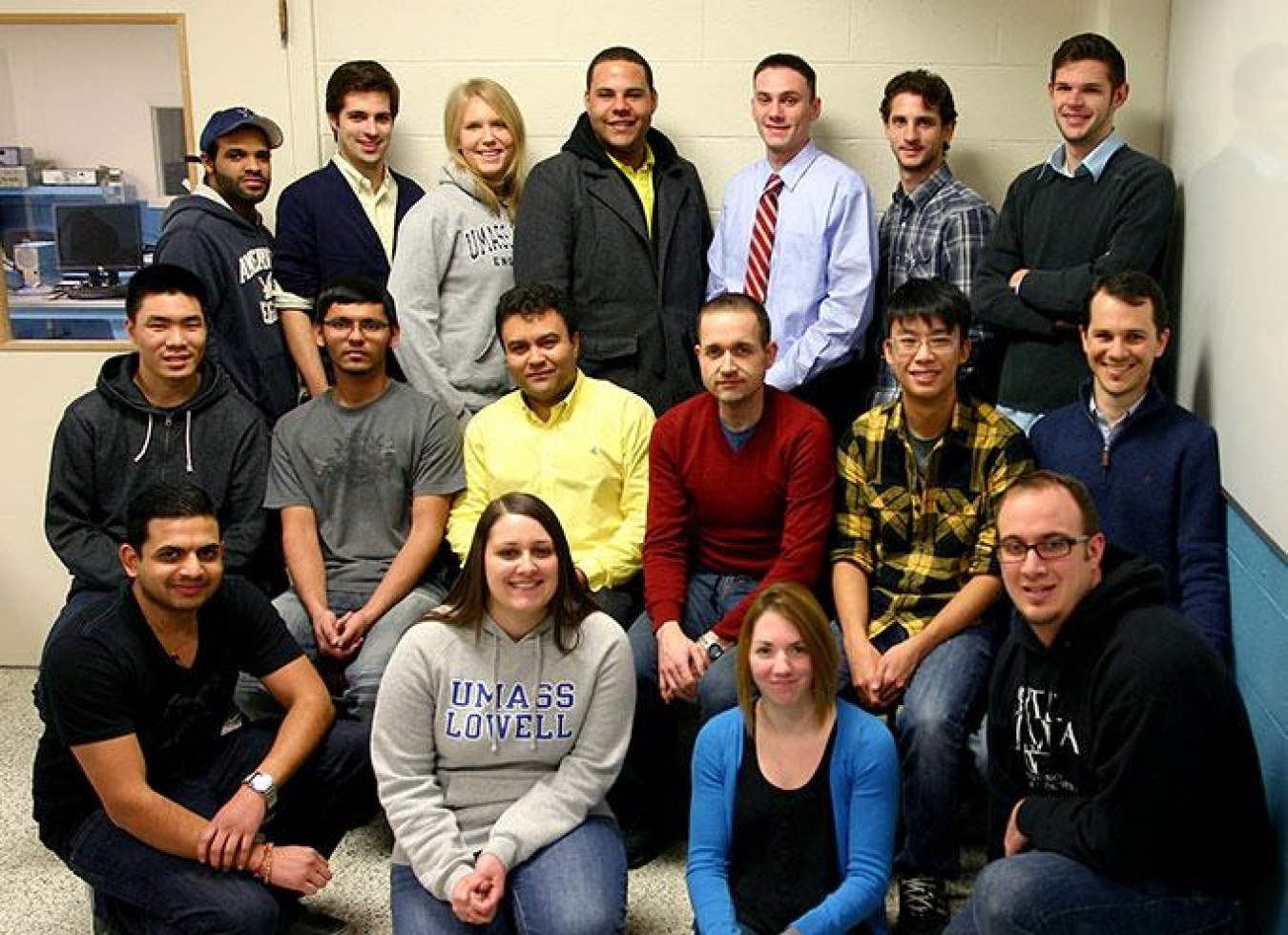The University of Massachusetts Lowell team employed a Design Thinking(1)-inspired approach to develop a transportable wind turbine that charges portable electronic devices.
July 10, 2015
Back row: Isaac Grulon, Dean Kennedy, Erika Sjoberg, Albert Andino, Robert Leboeuf, Gregory Lennartz, Michael Dube. Middle row: David Phung, Jigar Patel, Alexandre Sampaio, Patrick Logan, Jeffrey Chung, Peter Jones. Front row: Parth Patel, Donna DiBattista, Meaghan Riley, Michael Schaefer. Not pictured: Christopher Daly, Erik Anderson. Photo by David Willis.
THIRD PLACE OVERALL WINNER
Project Description
The University of Massachusetts Lowell team employed a Design Thinking(1)-inspired approach to develop a transportable wind turbine that charges portable electronic devices. The multi-disciplinary team of mechanical, plastics, and electrical engineering students combined with a small team of business students set out to define, understand, and empathize with cellphone user groups, especially those in need of an extra boost of energy. Because most urban users need to recharge their phones later in the day, such as after work or during their evening social activities, the team focused on this large potential customer base as a target for their products. See the entire project portfolio below or on the team's website.
Team Strategy
A series of ideation sessions surrounding the team's user-centric philosophy yielded two realizations. First, as wind turbines become smaller, the challenges associated with converting wind energy to electricity increase—aerodynamic efficiency decreases, generator rotational speed and cost increases, and the wind near the ground is inconsistent and usually has less available kinetic energy. Second, the team realized that a potential user frustration associated with wind-based personal device charging is the time required to charge a device while standing/waiting in a windy area. Most personal device charging profiles target a 1–2% per minute charging rate, translating into a 1–2 hour charging experience. The team tackled both of these challenges by redefining the charging experience to be more user and environmentally friendly while providing rapid and efficient energy transfer from renewable energy sources. The team developed a novel charging station concept called GoJuice—a rapid and free, ad-for-service phone charging solution.
Design Features
- Custom-designed protective phone case with integrated swappable battery
- Wind and solar-powered kiosks with a battery bank for a 1-minute or less stop-and-swap experience
References
- Tim Brown, "Design Thinking," Harvard Business Review, June 2008.

